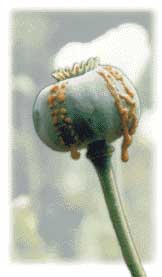Painkiller Abuse Continues To Grow;
Increasingly, drug abusers are getting their next fix
New Treatments Offer Hope
from their medicine cabinets, instead of from drug dealers.More than 6 million Americans abuse prescription drugs, according to the U.S. Drug Enforcement Administration. One in 10 teenagers admits to abusing painkillers, such as Vicodin and Oxycontin. Painkillers cause more overdoses than cocaine and heroin combined.
"Access to prescription painkillers has never been easier," says addictions psychiatrist Donna Yi, M.D., associate chief of staff and clinical director for The Menninger Clinic and assistant professor in the Menninger Department of Psychiatry & Behavioral Sciences at Baylor College of Medicine. "Many people start taking prescription painkillers for a legitimate reason, for pain after surgery or childbirth, or to deal with chronic pain. As the sense of euphoria and relaxation provided by the drugs gets reinforced, they become increasingly reliant on the drugs even when they no longer need them for pain."
Once hooked, patients may doctor shop to get multiple prescriptions to painkillers, forge prescriptions, order painkillers from web sites that don't require prescriptions or take a road trip to Mexico to supply their habits. Teenagers can get prescription painkillers from their parents' medicine cabinets and their friends—even dealers. Because prescription painkillers are so readily available, they don't have the stigma of illegal drugs, like heroin.
Yi adds that it may seem much easier and acceptable to swallow a pill than to find a vein, inject yourself with a drug and risk getting AIDS or overdosing. The word "heroin" instantly evokes a negative image—usually that of someone homeless and on the street.
However, like heroin, prescription painkillers such as Oxycontin and Vicodin stimulate opiate receptors in the brain, relieving pain and providing a sense of euphoria, and are highly addictive and difficult to quit without medical intervention.
Because opiates are so rewarding and reinforcing, once a person stops using them, the body goes into shock and withdrawal. Symptoms of withdrawal are similar to a severe case of the flu and may include fever, vomiting, diarrhea, muscle and bone pain, insomnia, cold flashes with goose bumps and involuntary leg movements. To avoid pain, many people abusing painkillers keep using.
New medications help painkiller abusers avoid the painful symptoms of withdrawal and cut the time of withdrawal. The drug buprenorphine was approved by the FDA in 2002 to help ease the symptoms of detoxification and radically decreases the time of detox from an average of two weeks to one or two days. Buprenorphine is a safer alternative to methadone and is available in a convenient pill form. The medication speeds a patient's entry into treatment, cutting down the time he or she is in bed and feeling uncomfortable withdrawal symptoms and drug cravings.
Staff at The Menninger Clinic, trained by addictions psychiatrist Dr. Thomas Kosten, began administering buprenorphine to patients undergoing detox in 2007. Kosten, Jay H. Waggoner Professor of Psychiatry & Behavioral Sciences at the Menninger Department of Psychiatry at BCM and research director of the Veteran Affairs National Substance Use Disorders Quality Enhancement Research Initiative, played an instrumental role in discovering the proper dose of the drug to treat humans with opiate dependence.
Patients may have accompanying mental illness and issues driving their addiction, such as anxiety, depression, life stresses, relationship problems, personality disorders or poor coping skills. A successful treatment program for addiction includes a thorough patient assessment and offers group and individual therapy, psychoeducation and access to self-help groups. Patients' families are also involved in the treatment process.
Relapse rates for patients who abuse painkillers are high, so creating a relapse prevention plan is crucial. Patients at Menninger leave with a wellness plan that might include appointments with therapists, support group meetings and exercise to improve their mood and health. Patients also learn the signs and symptoms that constitute a lapse, so they can stop a full-blown relapse.
Some patients may also need medications on a continual basis, such as buprenorphine or naltrexone, to help them avoid relapse. Both buprenorphine and naltrexone block the effects of opiates on the body. Patients who take buprenorphine, however, will feel mild withdrawal symptoms if they stop taking the drug—reminding them to consistently take their medicine. Doctors often prescribe a version of buprenorphine, combined with another opiate-blocker, naloxone, to guard against the intravenous use of buprenorphine. If the drug combination is injected, the naloxone can cause that person to quickly go into withdrawal.
"As the supply and variety of painkillers increase, more people will try them for non-medical reasons, and some will become addicted," Yi says. "Increased awareness, new medications used to treat painkiller abuse and novel therapies offer hope for people struggling with painkiller abuse."
Refs
HOME
Oxytrex
Glossary
Opium Images
Opium Timeline
Meet The Family
The Opium Poppy
Pain and Prohibition
The Birth of a New Generation
Chronic Pain: The Case For Opioids
